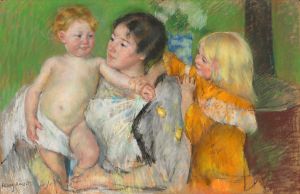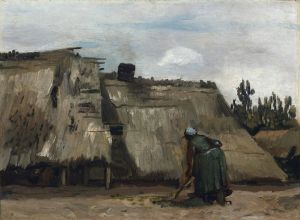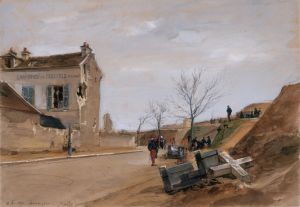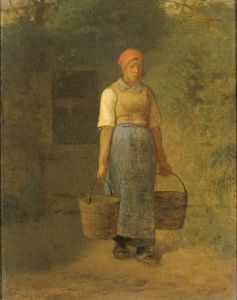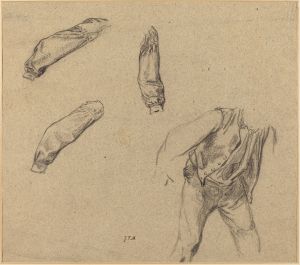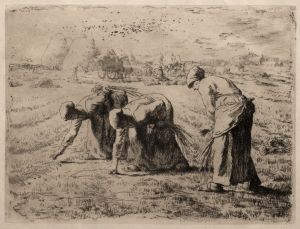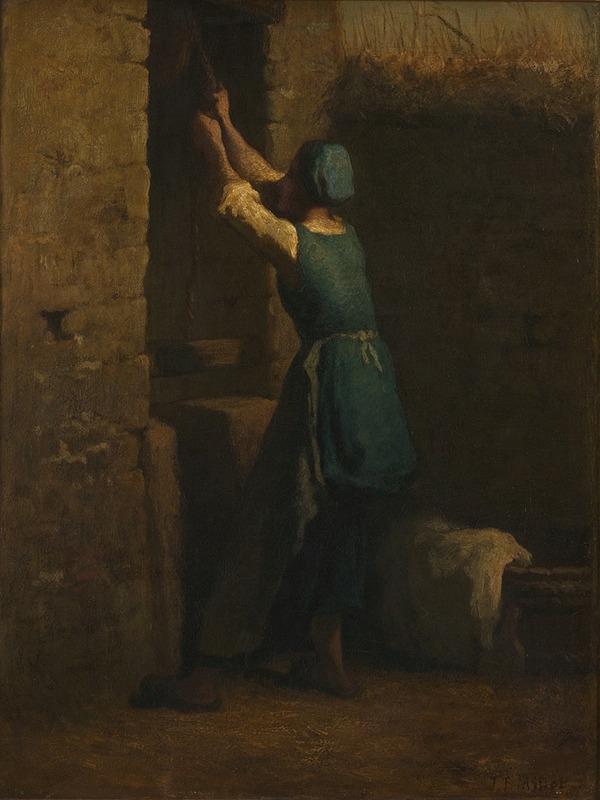
Woman at Well
A hand-painted replica of Jean-François Millet’s masterpiece Woman at Well, meticulously crafted by professional artists to capture the true essence of the original. Each piece is created with museum-quality canvas and rare mineral pigments, carefully painted by experienced artists with delicate brushstrokes and rich, layered colors to perfectly recreate the texture of the original artwork. Unlike machine-printed reproductions, this hand-painted version brings the painting to life, infused with the artist’s emotions and skill in every stroke. Whether for personal collection or home decoration, it instantly elevates the artistic atmosphere of any space.
Jean-François Millet, a prominent French painter and one of the founders of the Barbizon school, is renowned for his depictions of peasant life and rural landscapes. Among his works, "Woman at Well" is a notable painting that exemplifies his focus on rural themes and the daily lives of ordinary people. Although specific details about this particular painting are limited, it is consistent with Millet's broader artistic themes and style.
Millet was born on October 4, 1814, in Gruchy, a hamlet in the Normandy region of France. His upbringing in a rural farming community profoundly influenced his artistic vision, as he often drew inspiration from the landscapes and people around him. Millet's works frequently highlight the dignity and hardship of rural laborers, capturing the essence of their daily lives with empathy and realism.
"Woman at Well" reflects Millet's characteristic approach to composition and subject matter. The painting likely depicts a rural scene, focusing on a woman engaged in the everyday task of drawing water from a well. This subject matter aligns with Millet's interest in portraying the simple yet essential activities of rural life. His paintings often emphasize the connection between humans and the land, illustrating how daily routines are intertwined with nature.
Millet's technique is marked by a careful attention to detail and a subdued color palette, which he used to convey the somber and earnest nature of his subjects. His brushwork and use of light often create a sense of volume and depth, bringing a three-dimensional quality to his figures and landscapes. In "Woman at Well," these techniques would likely be employed to highlight the physicality of the woman's task and the serene yet laborious atmosphere of rural life.
Throughout his career, Millet faced both acclaim and criticism. While some contemporaries appreciated his honest portrayal of peasant life, others criticized his work for its perceived lack of idealism and romanticism. Despite this, Millet's influence on later artists is undeniable. His focus on realism and the human condition paved the way for future movements, including Realism and Impressionism.
Millet's legacy is preserved through his numerous works housed in major museums worldwide, including the Musée d'Orsay in Paris and the Museum of Fine Arts in Boston. His paintings continue to be celebrated for their emotional depth and historical significance, offering insight into the lives of 19th-century rural communities.
While specific information about "Woman at Well" is sparse, it remains a testament to Millet's enduring interest in the themes of labor, nature, and the human experience. His ability to capture the essence of rural life with authenticity and respect has solidified his place as a pivotal figure in the history of art.






